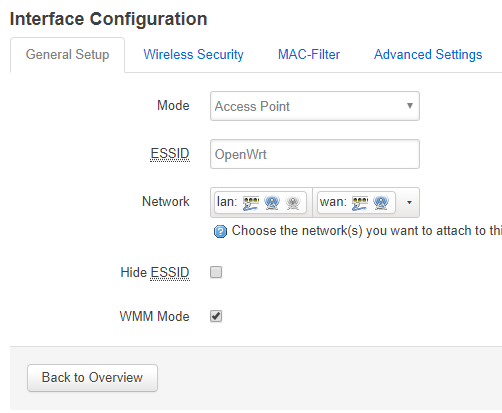According to this article:
The LAN bridge combines the WLAN interface(s) with the wired LAN ports to create a single logical network. In the
interfaceconfiguration setoption type bridgeor in LuCI Network→Interfaces→LANBridge interfacesbox and select the physical interfaces to bridge together. All switch ports in the bridge will act as a single network.
By default, the wireless interface is bridged to br-lan, so that all wireless clients (interface wlan0) will connect to the router and get DHCP leases just like other wired clients (interface lan), because they are all on a bridge facing the interface br-lan of the CPU. It is what most users want.
Things get funny when a single WLAN interface is allowed to be bridged to multiple bridge interfaces. For example, the SSID OpenWrt on radio0 can be part of both br-lan and br-wan at the same time. I don't understand the logic behind such scenario. Can someone explain?
